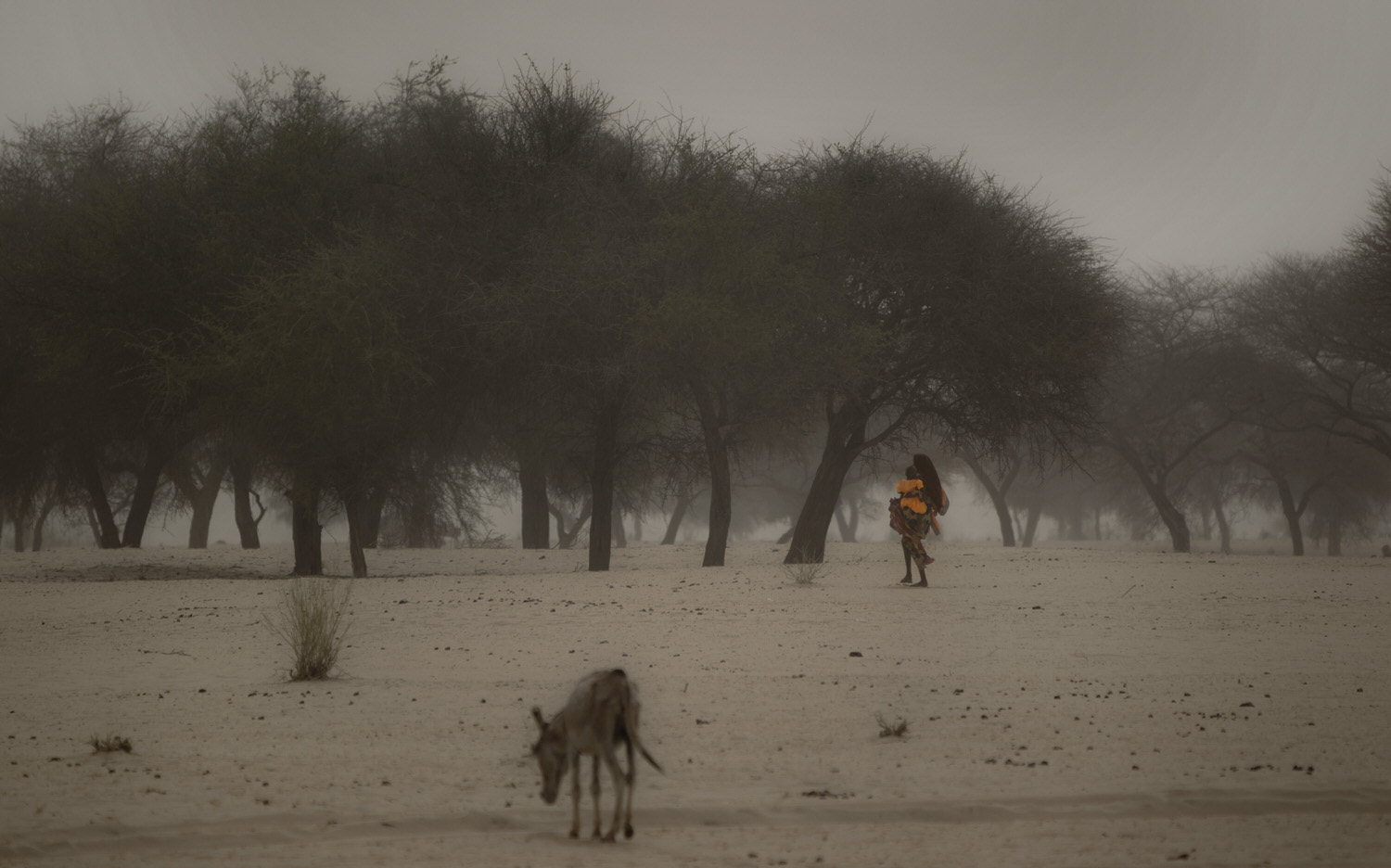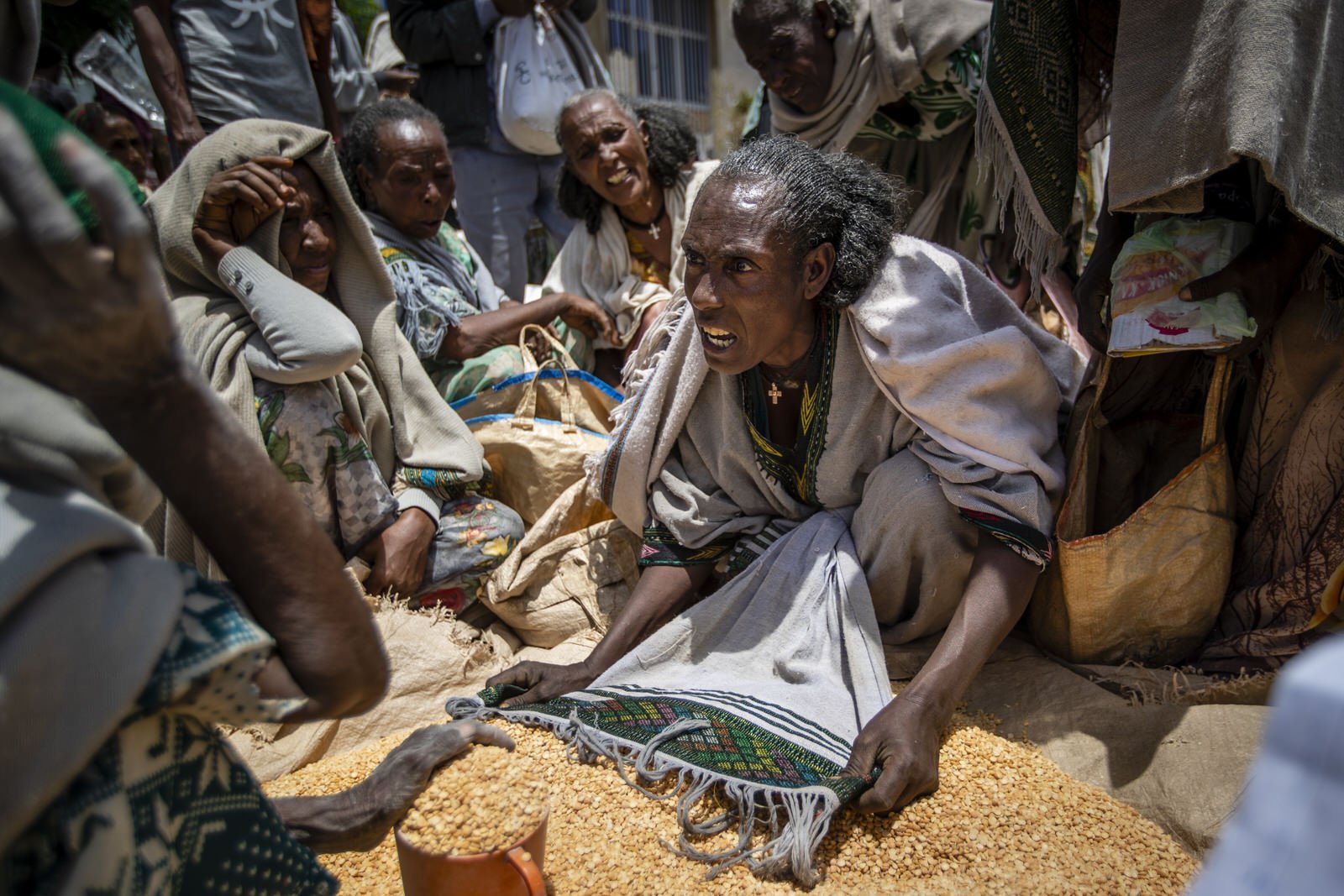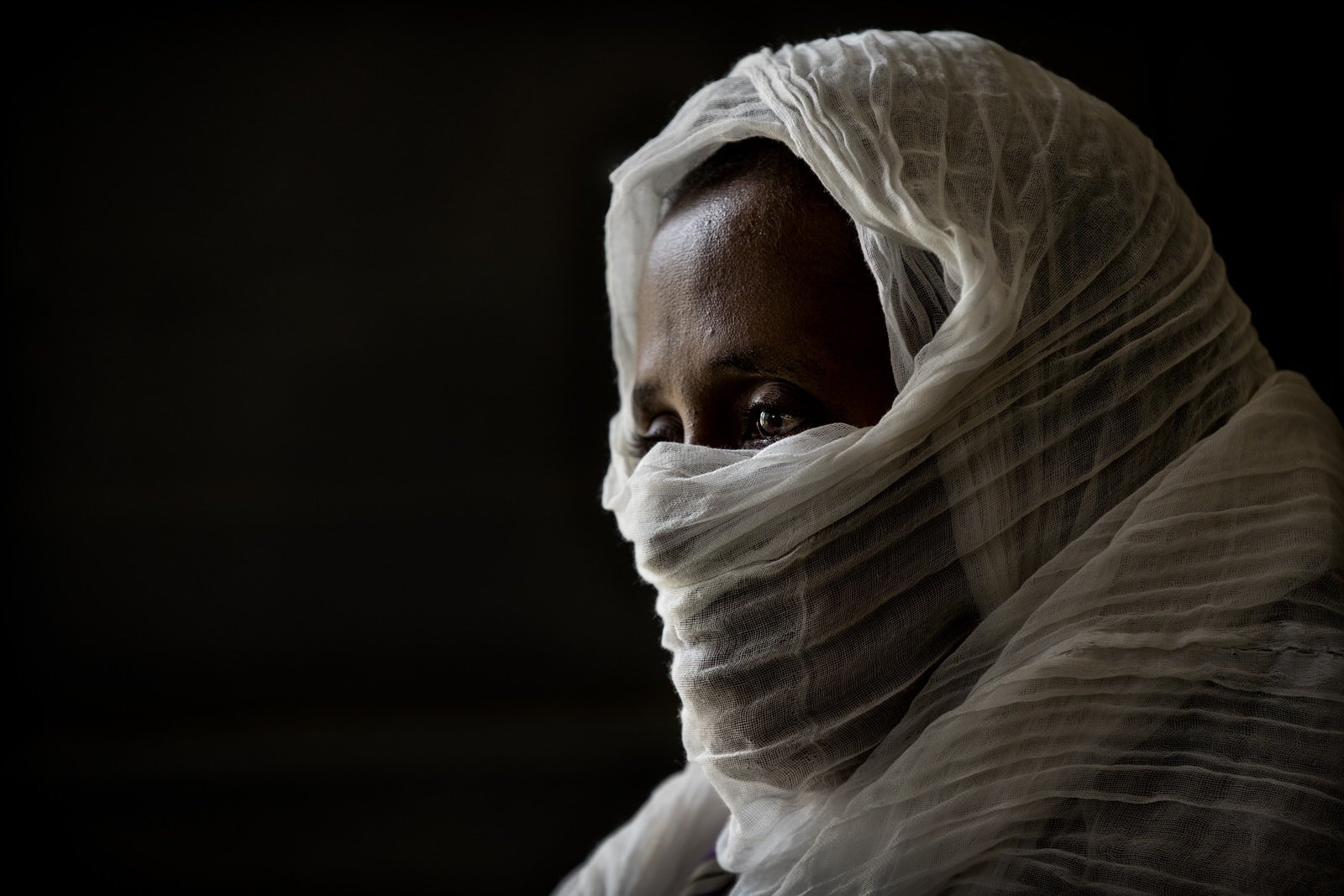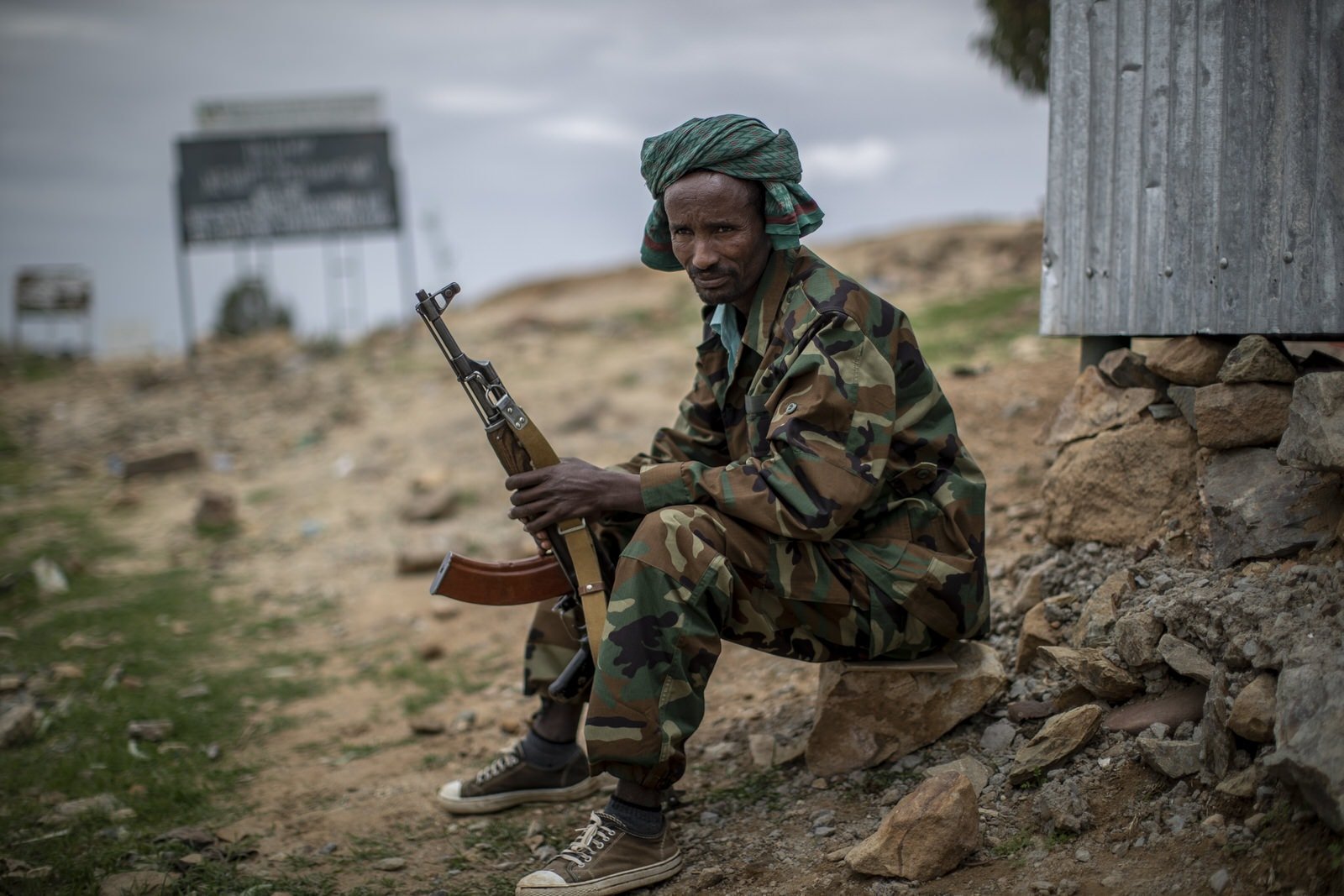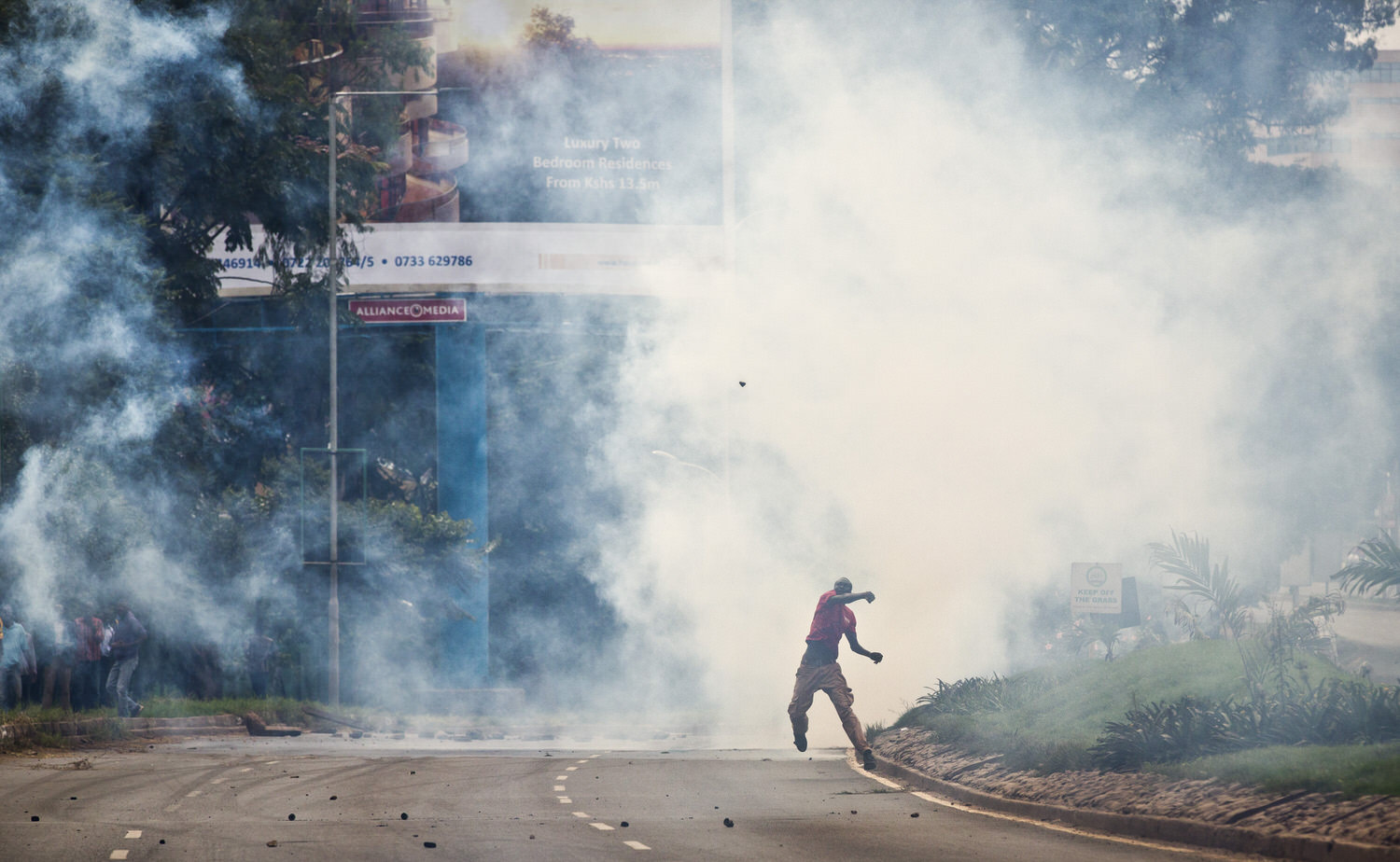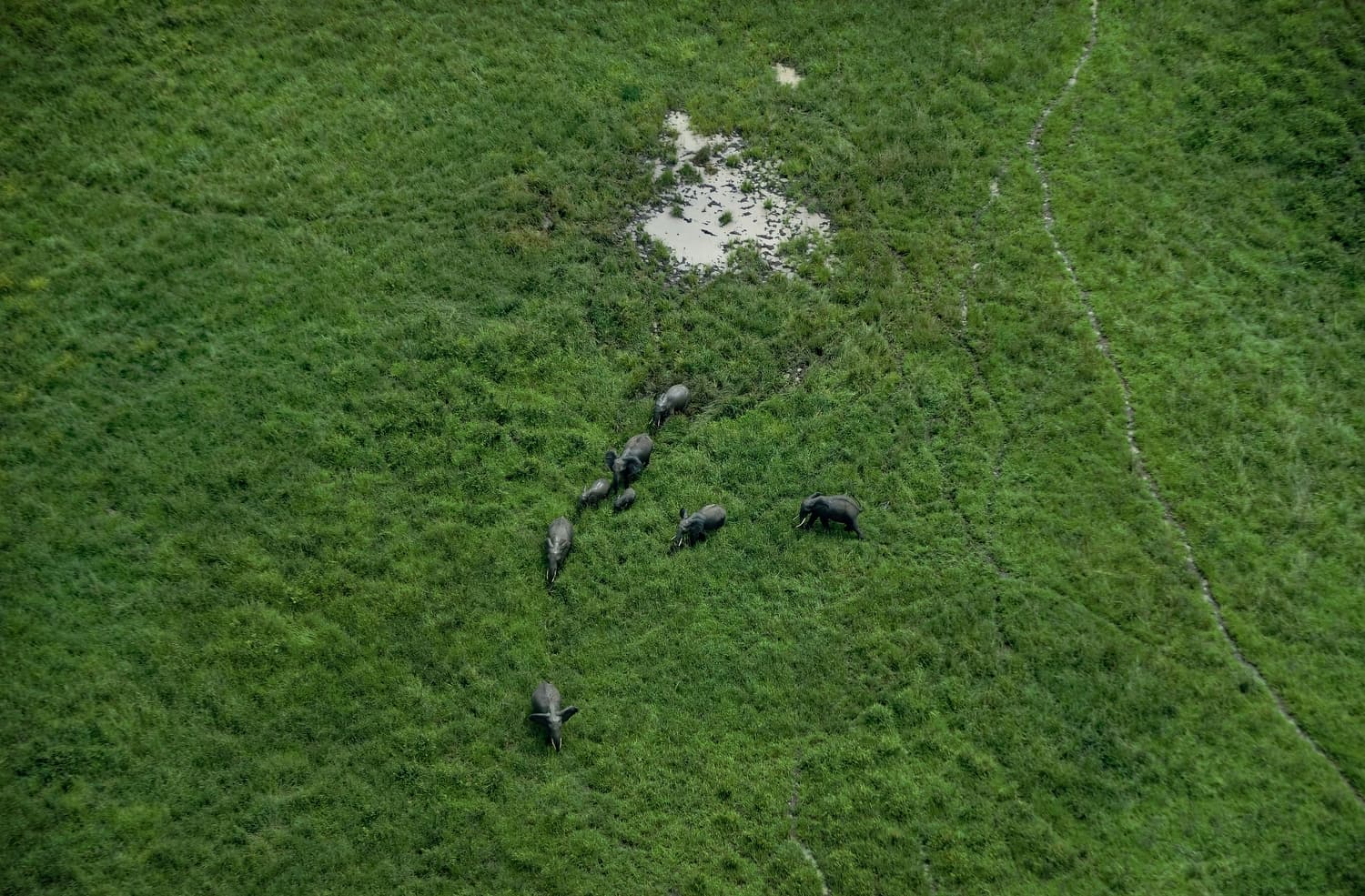Chad Hunger Crisis
A 2012 food and nutrition crisis across the Sahel belt found its epicentre in Chad, stemming from scarce rainfalls in 2011 which caused poor harvests and livestock production, but also was exacerbated by an influx of Chadians returning from Libya as a result of the civil war there. UNICEF estimated 127,000 children under 5 in Chad would require lifesaving treatment for severe acute malnutrition, with an estimated 1 million throughout the wider region of West and Central Africa in the countries of Niger, Nigeria, Mali, Chad, Burkina Faso, Cameroon, Senegal and Mauritania.
(Use the white dot at the bottom-right of each image to view captions)

A woman carries her child amidst dusty winds in the desert near Mondo, a village in the Sahel belt of Chad, Thursday, April 19, 2012. UNICEF estimates that 127,000 children under 5 in Chad's Sahel belt will require lifesaving treatment for severe acute malnutrition this year, with an estimated 1 million expected throughout the wider Sahel region of West and Central Africa in the countries of Niger, Nigeria, Mali, Chad, Burkina Faso, Cameroon, Senegal and Mauritania. The organization says the current food and nutrition crisis stems from scarce rainfalls in 2011, which caused poor harvests and livestock production, though the situation in Chad has also been exacerbated by an influx of Chadians returning from Libya as a result of the conflict there. (AP Photo/Ben Curtis)
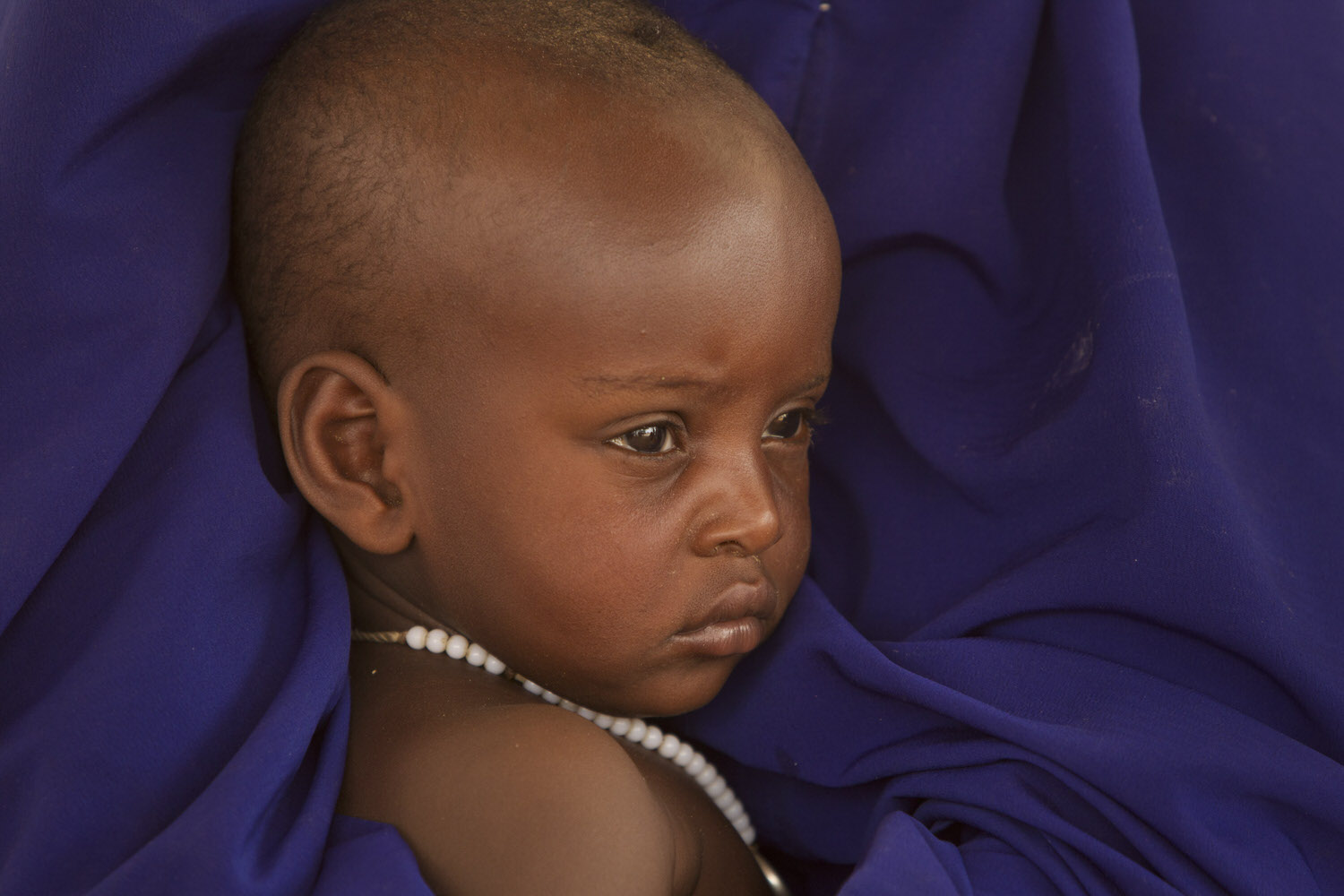
Mother Hadetta Mohammed holds her son Omar Lamine, 2, as she waits for him to be examined for signs of malnutrition at a walk-in nutrition clinic in Barrah, a desert village in the Sahel belt of Chad, Friday, April 20, 2012. UNICEF estimates that 127,000 children under 5 in Chad's Sahel belt will require lifesaving treatment for severe acute malnutrition this year, with an estimated 1 million expected throughout the wider Sahel region of West and Central Africa in the countries of Niger, Nigeria, Mali, Chad, Burkina Faso, Cameroon, Senegal and Mauritania. The organization says the current food and nutrition crisis stems from scarce rainfalls in 2011, which caused poor harvests and livestock production, though the situation in Chad has also been exacerbated by an influx of Chadians returning from Libya as a result of the conflict there. (AP Photo/Ben Curtis)
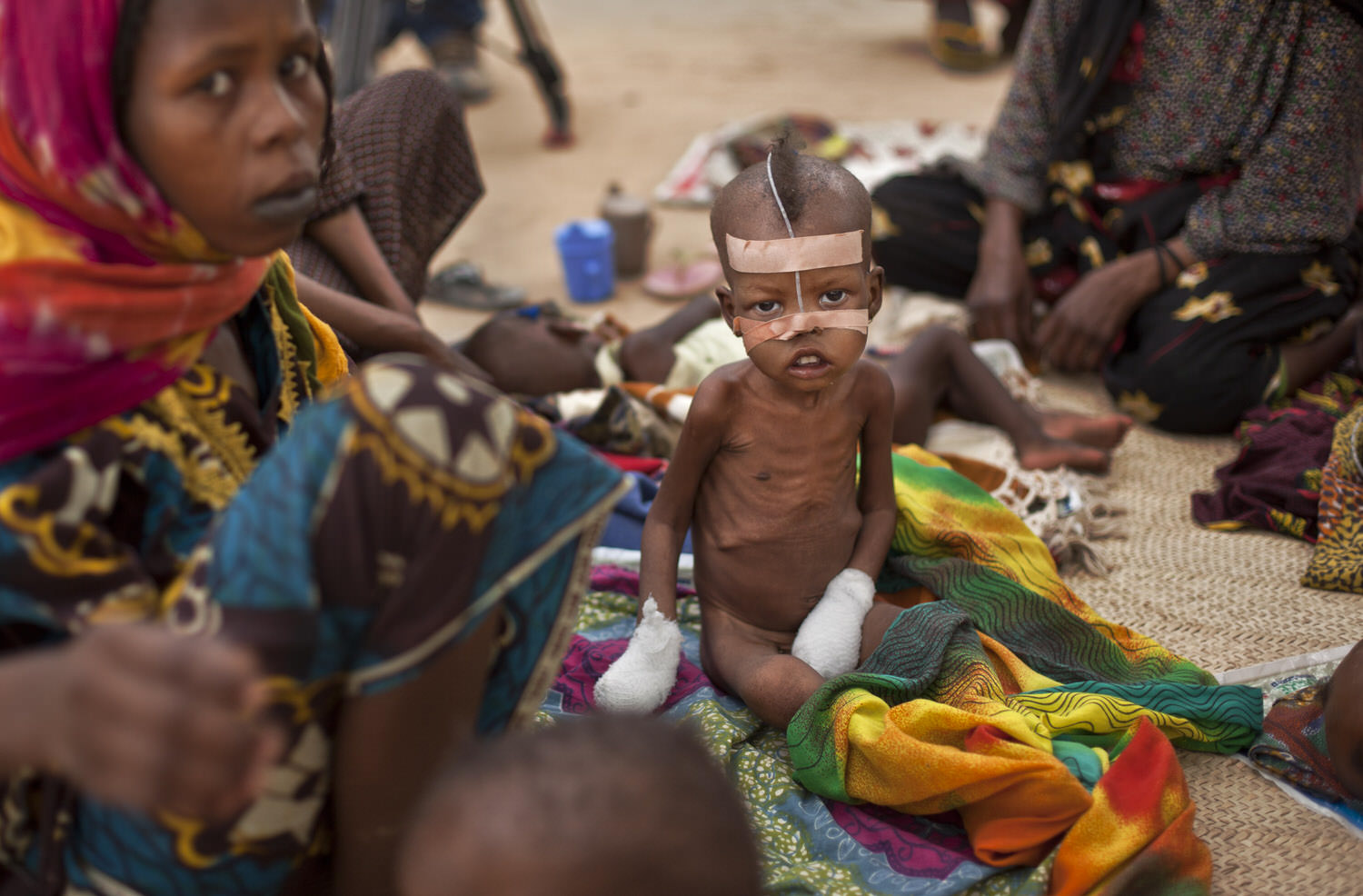
Halime Moussa, 3, receives treatment via a nasal feeding tube and has bandaged hands to prevent him from removing it, at the therapeutic nutrition ward of the town's hospital, which his mother Kaltouma Abakar, left, travelled 70km to reach, in Mao, capital of the Kanem region of Chad, Tuesday, April 17, 2012. UNICEF estimates that 127,000 children under 5 in Chad's Sahel belt will require lifesaving treatment for severe acute malnutrition this year, with an estimated 1 million expected throughout the wider Sahel region of West and Central Africa in the countries of Niger, Nigeria, Mali, Chad, Burkina Faso, Cameroon, Senegal and Mauritania. The organization says the current food and nutrition crisis stems from scarce rainfalls in 2011, which caused poor harvests and livestock production, though the situation in Chad has also been exacerbated by an influx of Chadians returning from Libya as a result of the conflict there. (AP Photo/Ben Curtis)
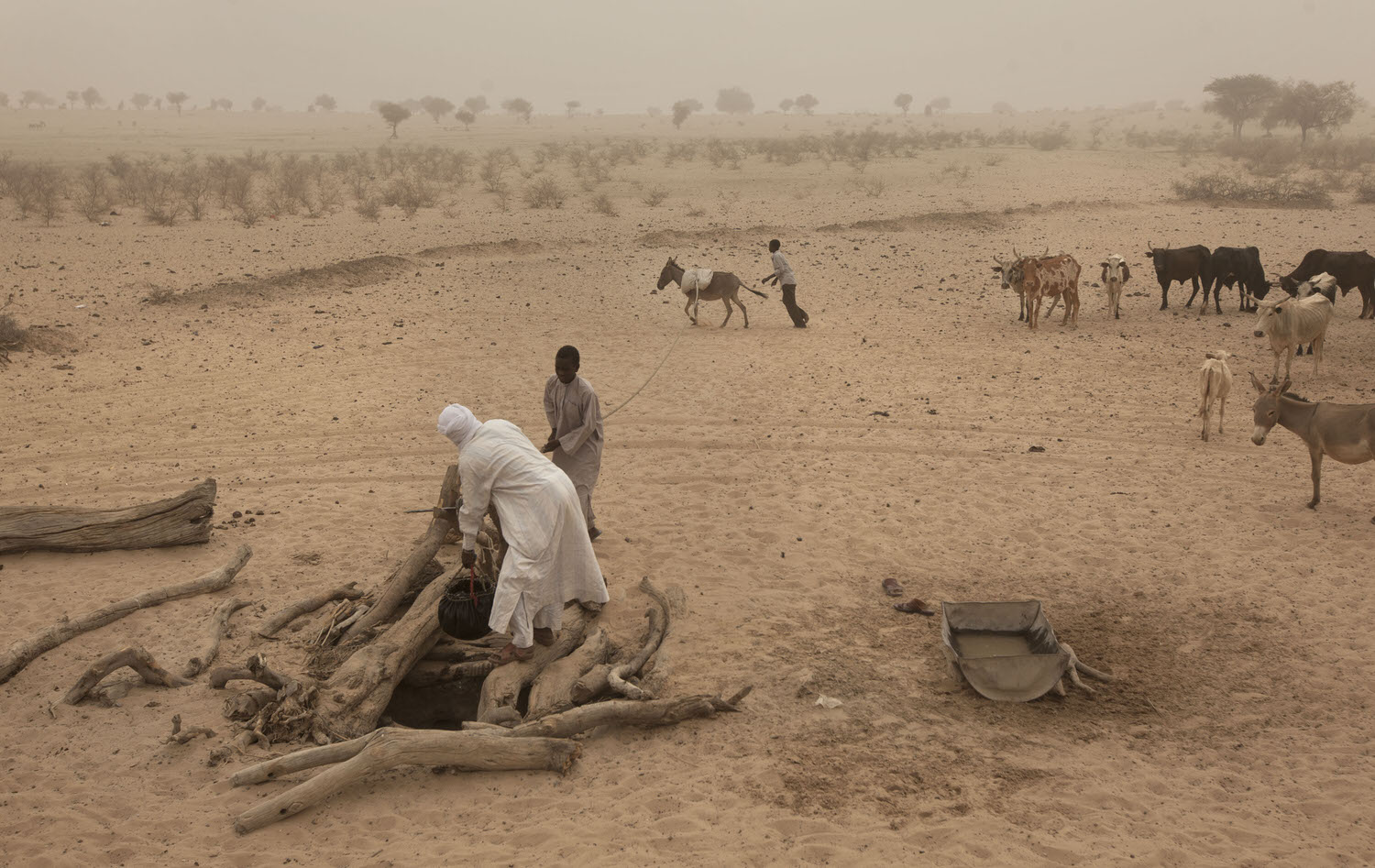
Chadian men and boys use a donkey to pull up water, of a quality only suitable for animals to drink, from a well which took twenty men a week to dig by hand, in a wadi near Tchyllah, a desert village in the Sahel belt of Chad, Thursday, April 19, 2012. UNICEF estimates that 127,000 children under 5 in Chad's Sahel belt will require lifesaving treatment for severe acute malnutrition this year, with an estimated 1 million expected throughout the wider Sahel region of West and Central Africa in the countries of Niger, Nigeria, Mali, Chad, Burkina Faso, Cameroon, Senegal and Mauritania. The organization says the current food and nutrition crisis stems from scarce rainfalls in 2011, which caused poor harvests and livestock production, though the situation in Chad has also been exacerbated by an influx of Chadians returning from Libya as a result of the conflict there. (AP Photo/Ben Curtis)
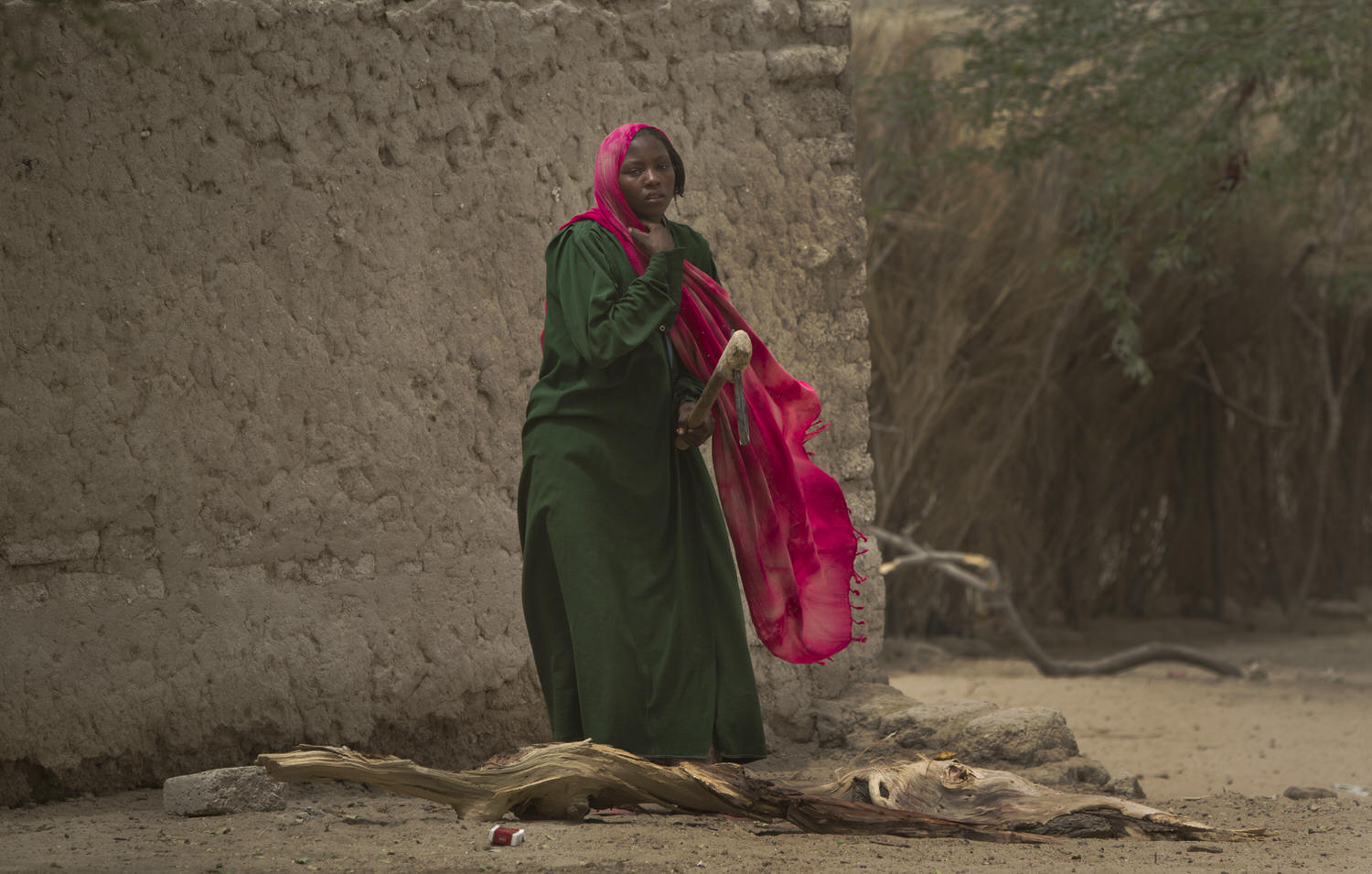
A woman adjusts her headscarf as she chops wood in Mondo, a desert village in the Sahel belt of Chad, Thursday, April 19, 2012. UNICEF estimates that 127,000 children under 5 in Chad's Sahel belt will require lifesaving treatment for severe acute malnutrition this year, with an estimated 1 million expected throughout the wider Sahel region of West and Central Africa in the countries of Niger, Nigeria, Mali, Chad, Burkina Faso, Cameroon, Senegal and Mauritania. The organization says the current food and nutrition crisis stems from scarce rainfalls in 2011, which caused poor harvests and livestock production, though the situation in Chad has also been exacerbated by an influx of Chadians returning from Libya as a result of the conflict there. (AP Photo/Ben Curtis)
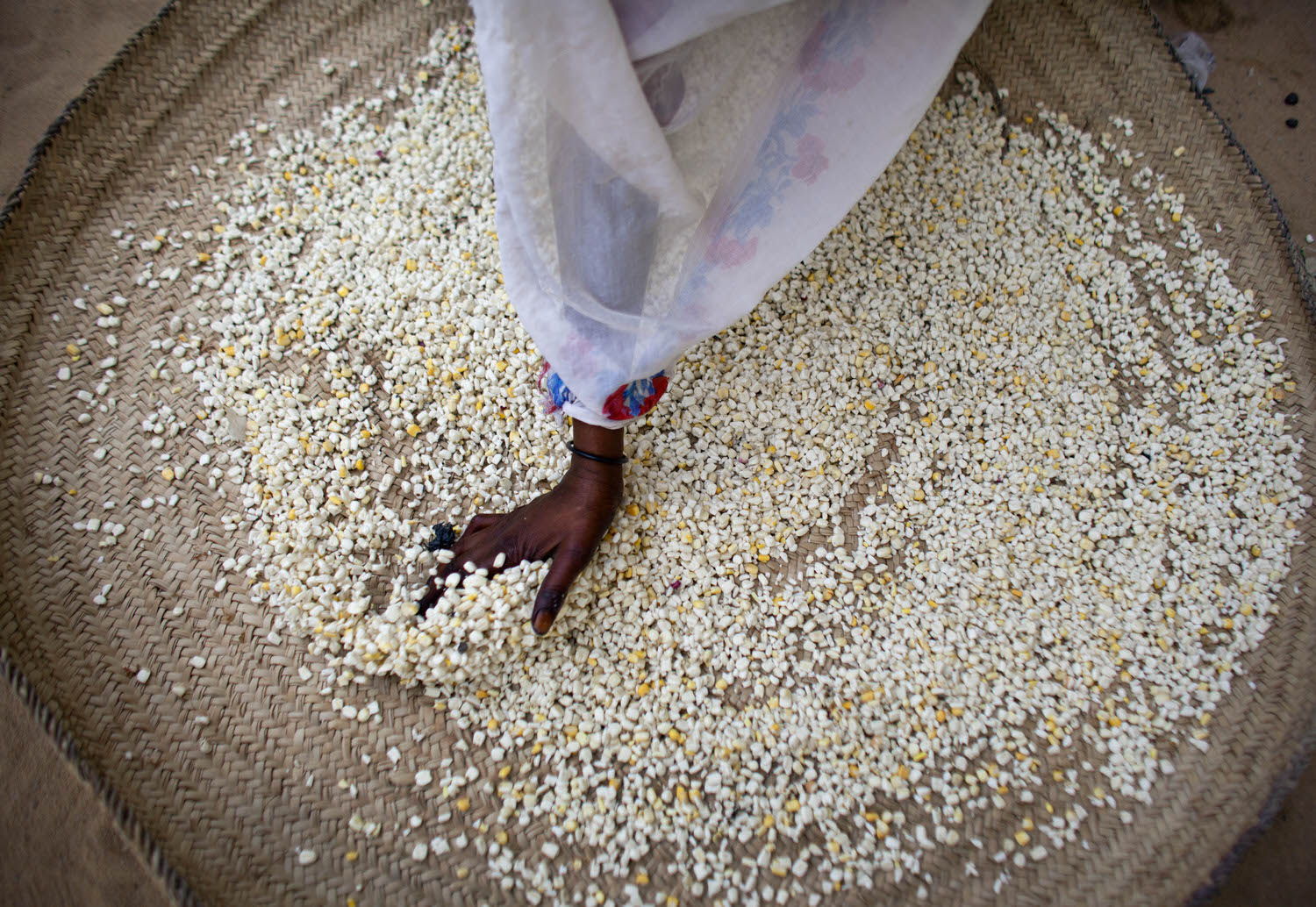
A woman casts millet grain for sale into a basket next to a walk-in feeding center in Mao, capital of the Kanem region of Chad, Tuesday, April 17, 2012. UNICEF estimates that 127,000 children under 5 in Chad's Sahel belt will require lifesaving treatment for severe acute malnutrition this year, with an estimated 1 million expected throughout the wider Sahel region of West and Central Africa in the countries of Niger, Nigeria, Mali, Chad, Burkina Faso, Cameroon, Senegal and Mauritania. The organization says the current food and nutrition crisis stems from scarce rainfalls in 2011, which caused poor harvests and livestock production, though the situation in Chad has also been exacerbated by an influx of Chadians returning from Libya as a result of the conflict there. (AP Photo/Ben Curtis)
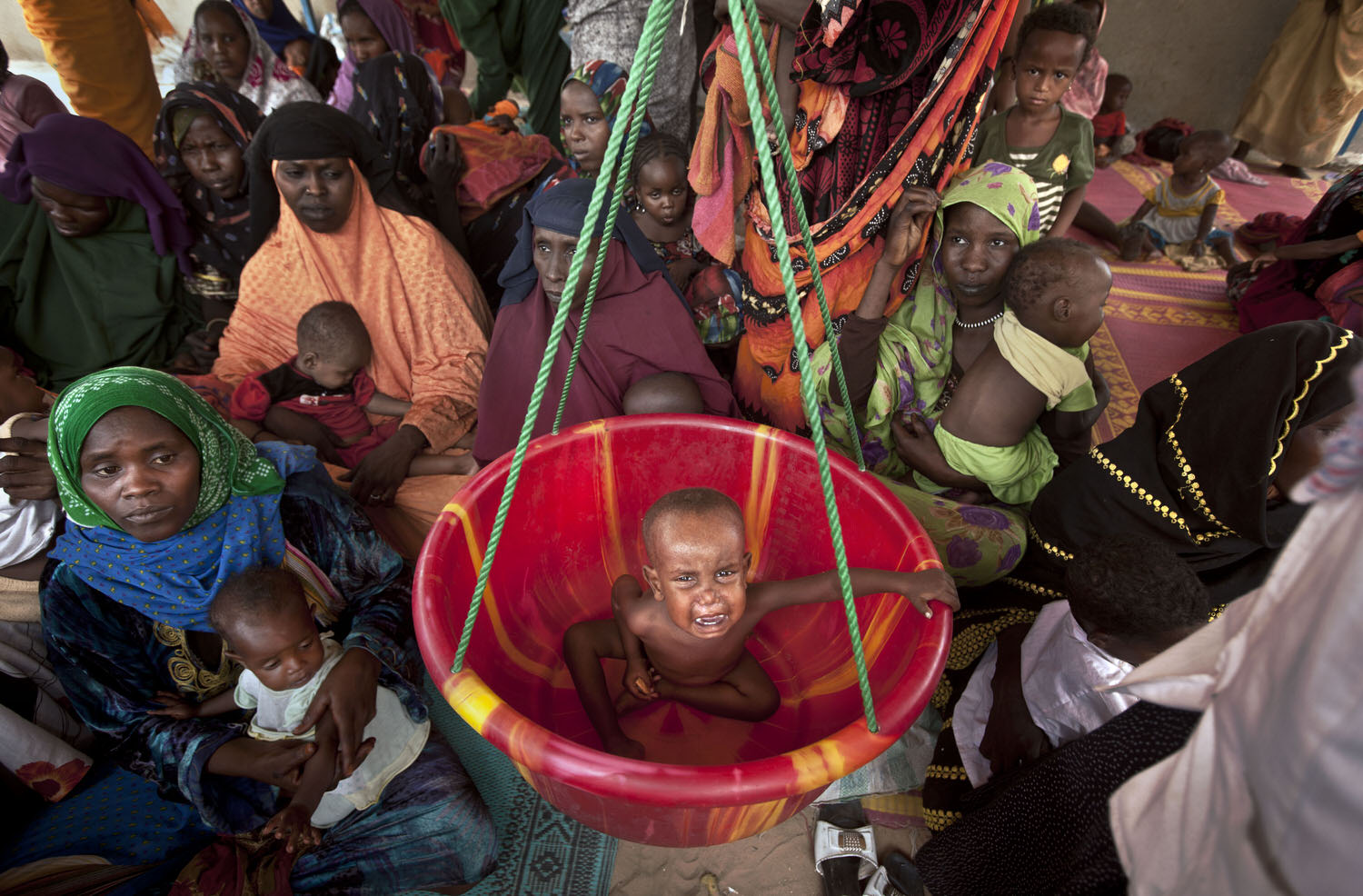
Brahim Abba, 2, has his weight checked in a scale as other mothers and children wait their turn, at a walk-in feeding center in Mao, capital of the Kanem region of Chad, Tuesday, April 17, 2012. UNICEF estimates that 127,000 children under 5 in Chad's Sahel belt will require lifesaving treatment for severe acute malnutrition this year, with an estimated 1 million expected throughout the wider Sahel region of West and Central Africa in the countries of Niger, Nigeria, Mali, Chad, Burkina Faso, Cameroon, Senegal and Mauritania. The organization says the current food and nutrition crisis stems from scarce rainfalls in 2011, which caused poor harvests and livestock production, though the situation in Chad has also been exacerbated by an influx of Chadians returning from Libya as a result of the conflict there. (AP Photo/Ben Curtis)
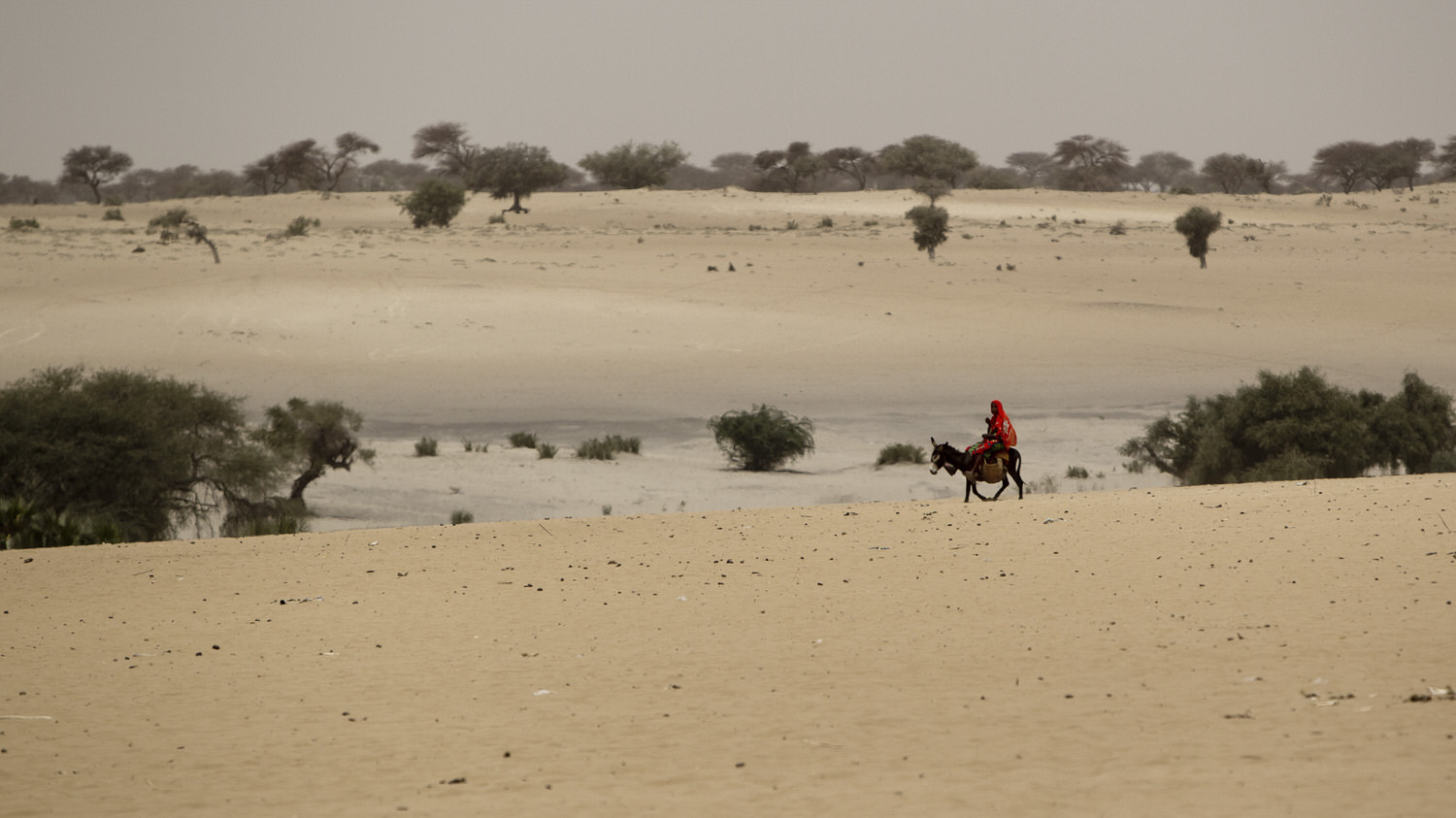
A woman rides a donkey over sand-dunes in Dibinindji, a desert village in the Sahel belt of Chad, Wednesday, April 18, 2012. UNICEF estimates that 127,000 children under 5 in Chad's Sahel belt will require lifesaving treatment for severe acute malnutrition this year, with an estimated 1 million expected throughout the wider Sahel region of West and Central Africa in the countries of Niger, Nigeria, Mali, Chad, Burkina Faso, Cameroon, Senegal and Mauritania. The organization says the current food and nutrition crisis stems from scarce rainfalls in 2011, which caused poor harvests and livestock production, though the situation in Chad has also been exacerbated by an influx of Chadians returning from Libya as a result of the conflict there. (AP Photo/Ben Curtis)

A woman walks on foot, after leaving the donkey she travelled on under the shade of a tree, to have her baby examined for signs of malnutrition at a walk-in feeding center in Dibinindji, a desert village in the Sahel belt of Chad, Wednesday, April 18, 2012. UNICEF estimates that 127,000 children under 5 in Chad's Sahel belt will require lifesaving treatment for severe acute malnutrition this year, with an estimated 1 million expected throughout the wider Sahel region of West and Central Africa in the countries of Niger, Nigeria, Mali, Chad, Burkina Faso, Cameroon, Senegal and Mauritania. The organization says the current food and nutrition crisis stems from scarce rainfalls in 2011, which caused poor harvests and livestock production, though the situation in Chad has also been exacerbated by an influx of Chadians returning from Libya as a result of the conflict there. (AP Photo/Ben Curtis)
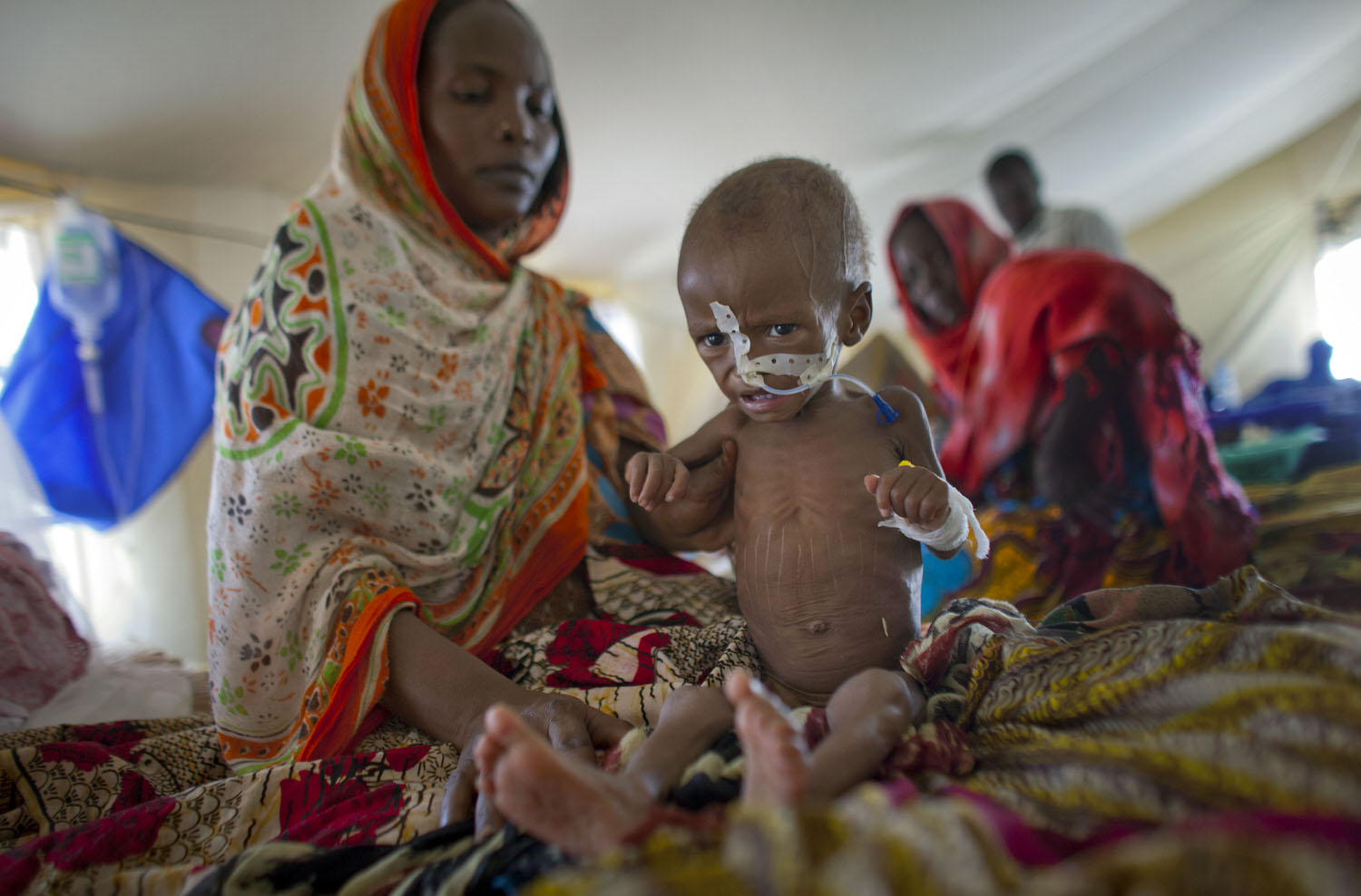
Zara Mahamat, suffering from malnutrition, diahorrea and fever, receives treatment through a nasal feeding tube accompanied by her mother, in an intensive care tent at the hospital in N'Gouri, a desert village in the Sahel belt of Chad, Wednesday, April 18, 2012. UNICEF estimates that 127,000 children under 5 in Chad's Sahel belt will require lifesaving treatment for severe acute malnutrition this year, with an estimated 1 million expected throughout the wider Sahel region of West and Central Africa in the countries of Niger, Nigeria, Mali, Chad, Burkina Faso, Cameroon, Senegal and Mauritania. The organization says the current food and nutrition crisis stems from scarce rainfalls in 2011, which caused poor harvests and livestock production, though the situation in Chad has also been exacerbated by an influx of Chadians returning from Libya as a result of the conflict there. (AP Photo/Ben Curtis)
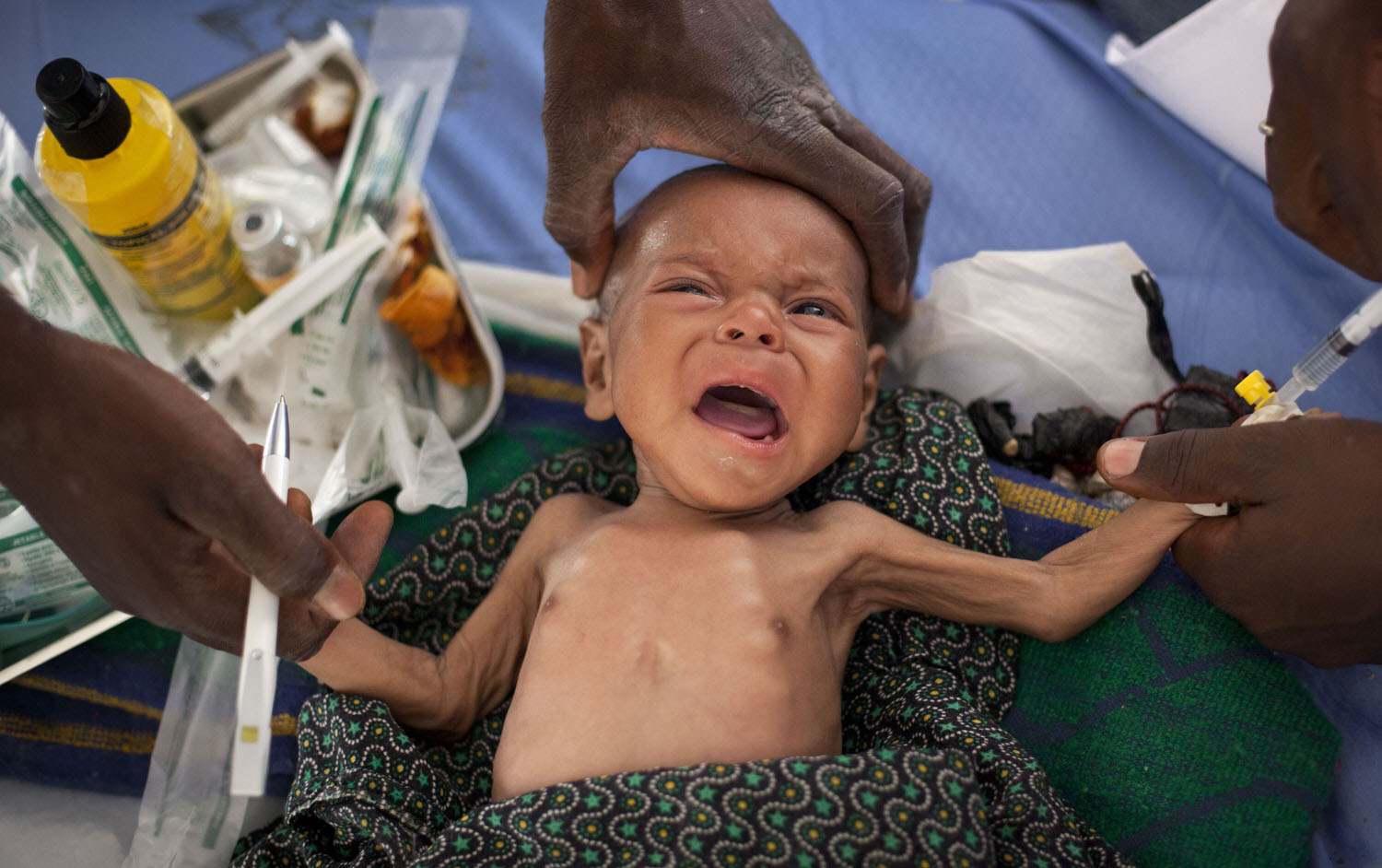
Kouboura Ali, 8 months old, who is unable to accept food orally due to a malnutrition-related illness, cries out as she receives an injection of an antibiotic by a doctor in the intensive care tent at the hospital in N'Gouri, a desert village in the Sahel belt of Chad, Wednesday, April 18, 2012. UNICEF estimates that 127,000 children under 5 in Chad's Sahel belt will require lifesaving treatment for severe acute malnutrition this year, with an estimated 1 million expected throughout the wider Sahel region of West and Central Africa in the countries of Niger, Nigeria, Mali, Chad, Burkina Faso, Cameroon, Senegal and Mauritania. The organization says the current food and nutrition crisis stems from scarce rainfalls in 2011, which caused poor harvests and livestock production, though the situation in Chad has also been exacerbated by an influx of Chadians returning from Libya as a result of the conflict there. (AP Photo/Ben Curtis)
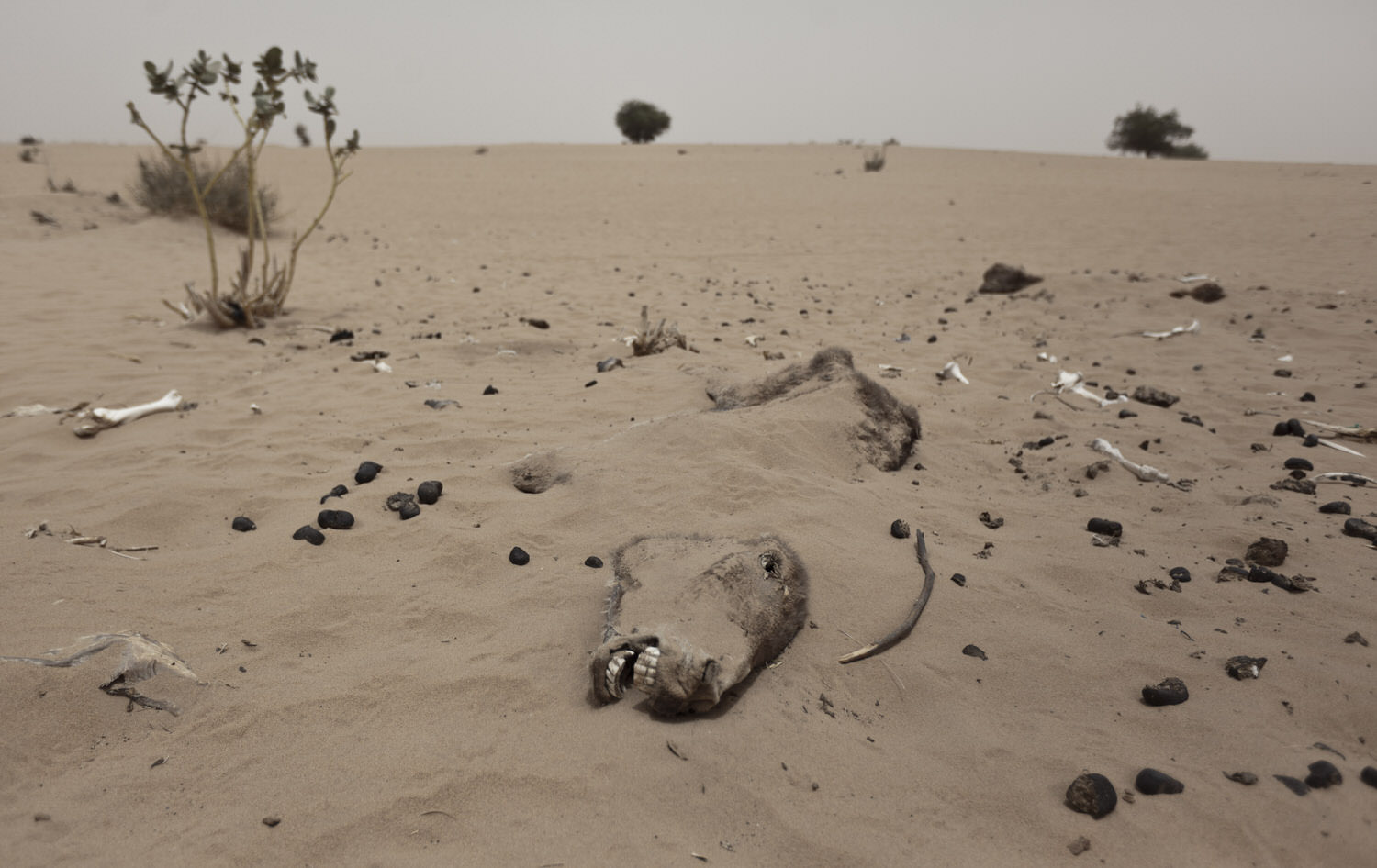
A dead donkey lies partially covered by the wind-swept sand in an area of desert where villagers take dead animals to avoid the smell and potential for disease affecting them, near the village of Dala in the Sahel belt of Chad, Friday, April 20, 2012. UNICEF estimates that 127,000 children under 5 in Chad's Sahel belt will require lifesaving treatment for severe acute malnutrition this year, with an estimated 1 million expected throughout the wider Sahel region of West and Central Africa in the countries of Niger, Nigeria, Mali, Chad, Burkina Faso, Cameroon, Senegal and Mauritania. The organization says the current food and nutrition crisis stems from scarce rainfalls in 2011, which caused poor harvests and livestock production, though the situation in Chad has also been exacerbated by an influx of Chadians returning from Libya as a result of the conflict there. (AP Photo/Ben Curtis)







